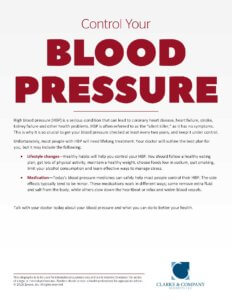Stroke
A stroke occurs when the blood supply to a part of the brain is stopped or reduced, meaning oxygen and nutrients cannot be delivered to brain tissue. Brain cells will then begin to die quickly, even within minutes. Earlier treatment can reduce damage to the brain and future complications. Today, strokes can be prevented and treated, and far fewer Americans die from strokes than in the past.
of Americans Deaths are Caused by Stroke
The Cost of Strokes in the United States Each year
of Strokes Occur in People Who Have Previously Had A Stroke
Risk Factors
Lifestyle Risk Factors
- Being overweight or obese
- Physical inactivity
- Heavy or binge drinking
- Use of illicit drugs such as cocaine and methamphetamines
Medical Risk Factors
- High blood pressure
- Smoking or exposure to secondhand smoke
- High cholesterol
- Diabetes
- Obstructive sleep apnea
- Cardiovascular disease: heart failure, heart defects, heart infection or abnormal heart rhythm
- Family history of stroke, heart attack or transient ischemic attack
Other Risk Factors
- Age — Those 55 and older have a higher risk of stroke
- Race — African-Americans have a higher risk of stroke
- Sex — Men have a higher risk of stroke than women, but women are more likely to be older and die from strokes
- Hormones — Use of hormonal birth control pills or therapies that include estrogen can increase risk, as well as pregnancy and childbirth
Symptoms
Numbness or paralysis of the face, arm, or leg. Often occurs on only one side of the body. To test this, try raising both arms at the same time, if one begins to fall, it may be a sign of a stroke. Another sign is a side of the mouth drooping.
Prevention
Control High Blood Pressure
Monitor stress, diet, exercise, and alcohol and sodium consumption.
Quit Smoking
Smoking and exposure to secondhand smoke are major contributors to strokes.
Lower Cholesterol and Saturated Fat
Especially avoid saturated fat and trans fats to reduce the plaque in your arteries.
Maintain a Healthy Weight
Losing as little as 10 pounds may lower your blood pressure and improve your cholesterol levels, stroke risk factors.
Regular Exercise
Exercise can lower your blood pressure, increase your level of high-density lipoprotein cholesterol, help you lose weight, control diabetes and reduce stress.
Drink in Moderation
Consuming large amounts of alcohol can greatly increase your risk of stroke. Also, make sure that any medications you take do not react with alcohol.






